- Home
- slideshows
- miscellaneous
- A San Francisco startup designs voice-activated furniture that's stored in the ceiling and can drop when you tell it to. Here's how Bumblebee Spaces' systems work.
A San Francisco startup designs voice-activated furniture that's stored in the ceiling and can drop when you tell it to. Here's how Bumblebee Spaces' systems work.
Murthy demonstrated the systems for Business Insider on a recent visit to the Bumblebee Spaces office in the Mission neighborhood.

You can control the modules via an iOS app or with your voice.
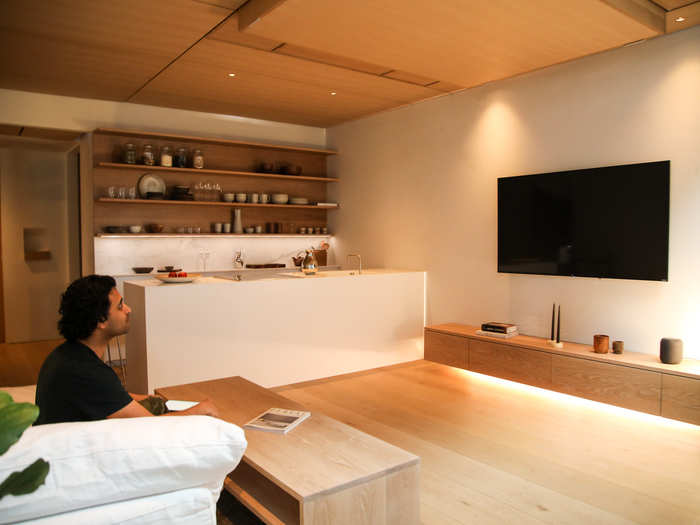
Murthy touched a button on a tablet ...
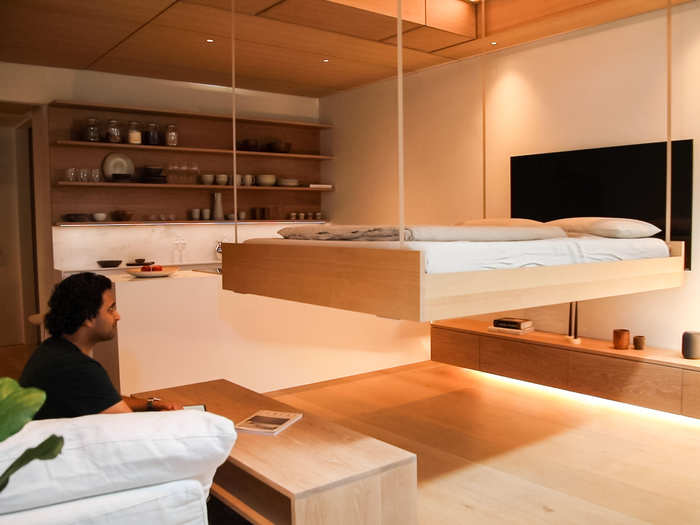
... and down came the bed.
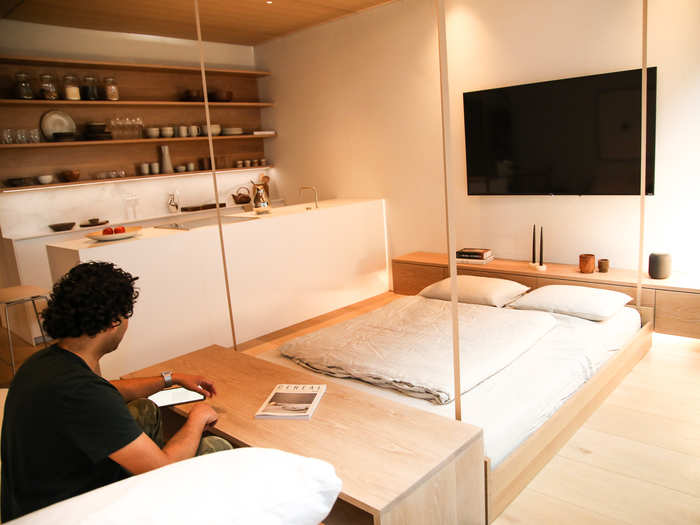
Artificial intelligence also works to learn from your behavior and be able to interpret your needs, such as remembering where you put what.
"Our AI learns from your preferences and routine, then adapts to suit your life," reads the company website.
There are in-module cameras that can show the user on the ground where their belongings are in each compartment.
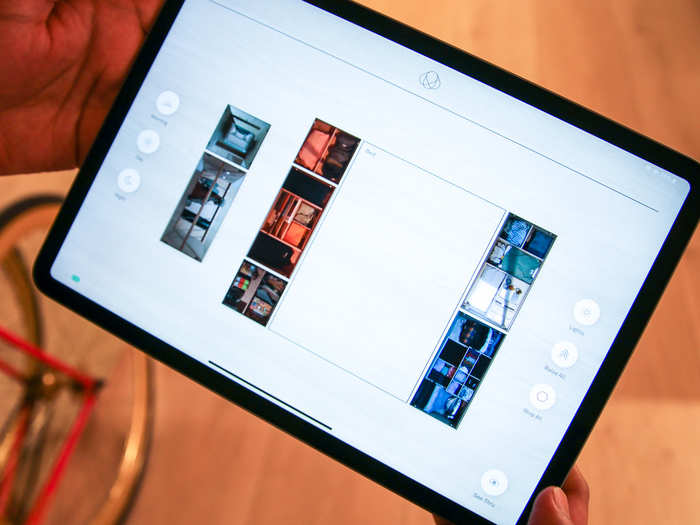
Murthy was inspired by, of all things, Disney's Mickey Mouse Clubhouse TV show series that showed Mickey and friends operating in different rooms of the same shape-shifting space.
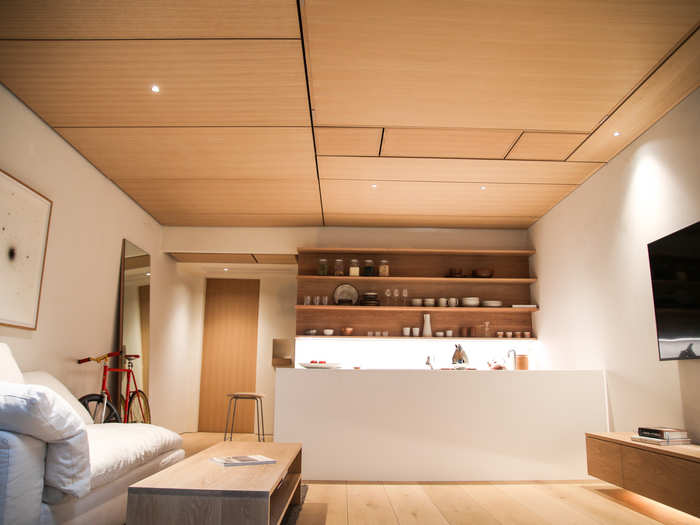
But another source of inspiration is how a show is run on a theatre stage, with the fly systems lifting set designs up and down as the performance goes on.
Bumblebee Spaces was his "detox project," or side project, that he worked on during weekends and nights during his 18 months spent at Tesla.
The modules are categorized as fixtures, furniture, and equipment (FF&E,) a term used to describe movable furniture that is not permanently connected to a structure. They're similar to light fixture installations in a home.
The company starts by installing railings of a sort onto the ceilings.
"Then we hang the robots off of those, and all the load is kind of distributed all over the ceiling," Murthy said.
The "robots" are more so automated ceiling furniture, but Murthy said the case could be made to dub them robots.
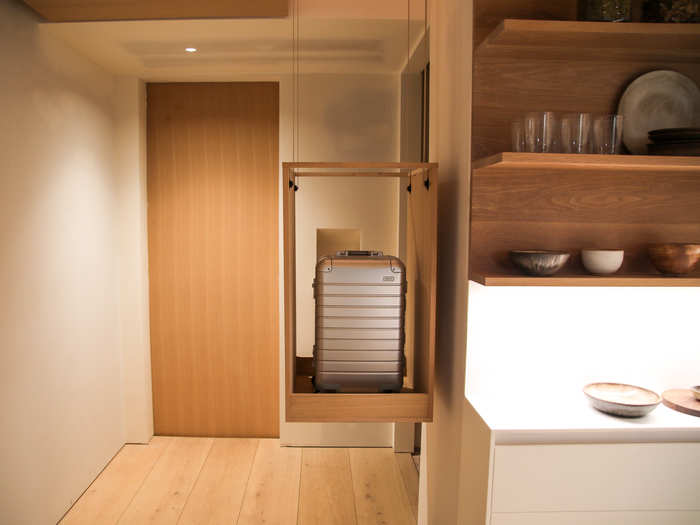
The modules and their sensors are intelligent, said Murthy, and possess an awareness of the environment and interaction with the user. The systems have "layers" of safety, according to Murthy. A series of sensors, which are similar to the kind used in garage doors, help make the machines aware of their surroundings.
There's a limit on how much a module can lift and what load you can put on it, meaning if someone was laying on the bed, the system is designed to remain in place even if a user instructs it to recede into the ceiling.
The sensors also scan the space underneath where a module would descend into and, if someone or something was in the way, would remain in its lofted position.
It's what Murthy called static and dynamic safety. As a module is descending, it's constantly checking the volume of the space.
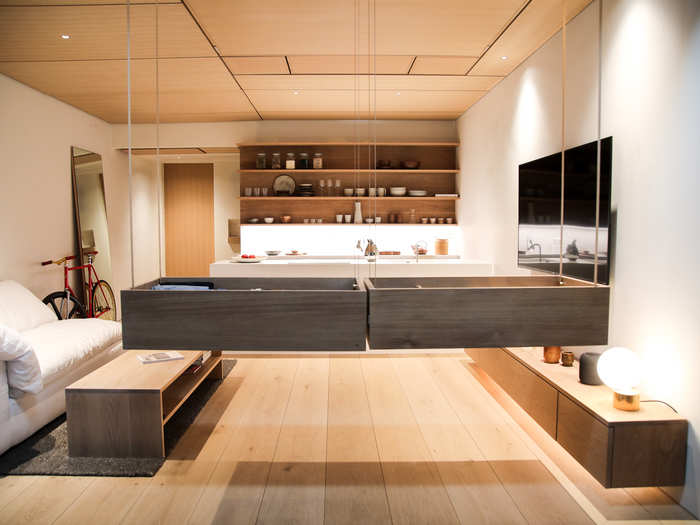
According to Murthy, it's a difficult feat to accomplish, but he said it's something that the company has done.
Bumblebee's systems would probably fall into the smart home classification, which Murthy said has been "hijacked by light and speakers" in recent times. He said what his company is designing may be a better example of what a smart home could be.
"I would argue this is the smart home," Murthy said.

Murthy said the company will sometimes take on customers looking to retrofit their homes with the modules, but the company is more focused on working with developers.
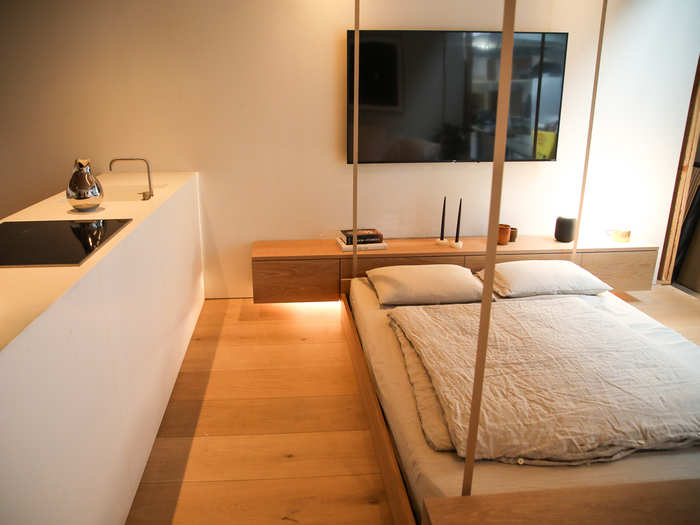
"We want more people to experience it," Murthy said, and scaling in one building with many units is a good way to do that.
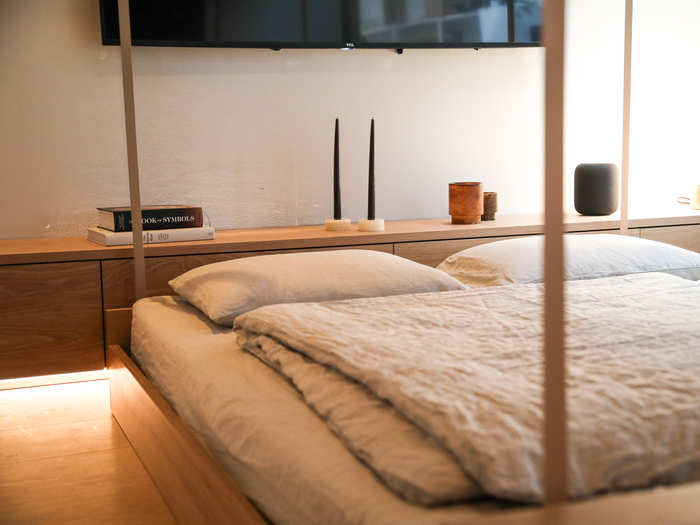
Murthy wouldn't disclose prices on the systems and their installations, though he said they'll be announcing mass-market pricing later this year.
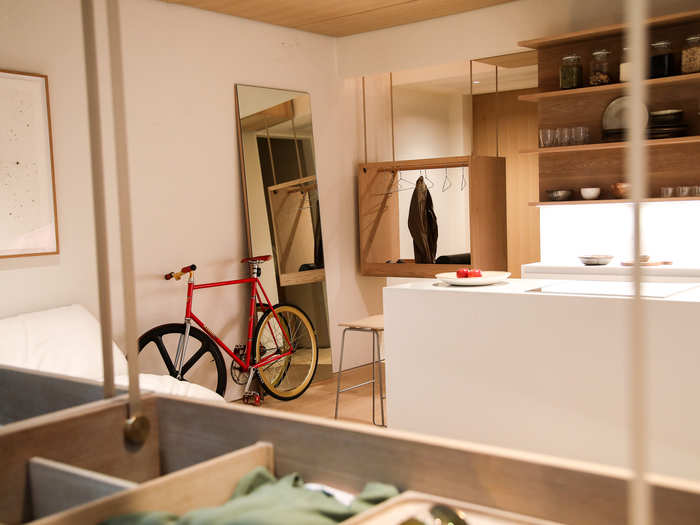
He did say that since the systems are defined as FF&E, it doesn't cost as much as traditional home add-ons.
"Even though we create space, it's considerably less than adding another room, considerably less than building out a closet or things like that," Murthy said.
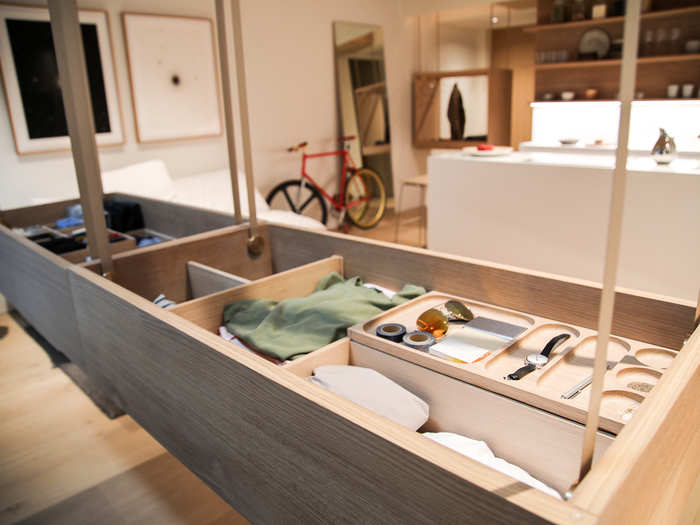
And since the installation doesn't involve building into a home, the startup isn't limited by building regulations set in place by the city, according to Murthy.
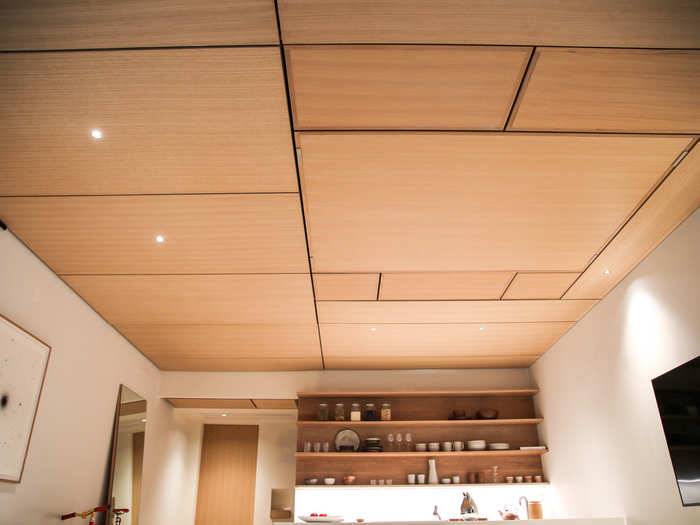
The company does need to consider codes regarding the mechanical, electrical, and plumbing systems.
It also has to consider how much load each anchor can take, how far away the modules must be from fire sprinklers, and what kind of electrical wiring can be run, which Murthy said involves a low voltage.
"On the electrical side, we are just like an appliance," Murthy said.
Bumblebee Spaces is involved with a San Francisco apartment project in the city's Dogpatch neighborhood.
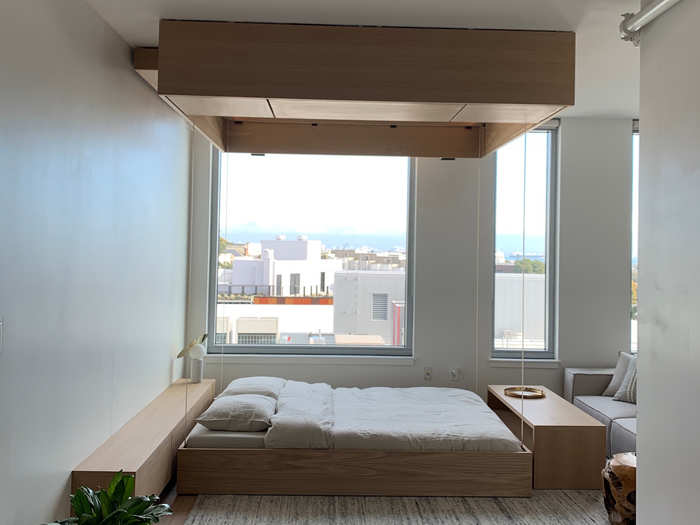
The two-bedroom apartments at The Landing transform into three-bedrooms thanks to Bumblebee's systems, Murthy said. Two-bedroom units listed available on the website are priced between $4,760 and $5,000.
This is an example of an a la carte retrofitting — notice how the bed and drawer modules don't take up the full footage of the ceiling.
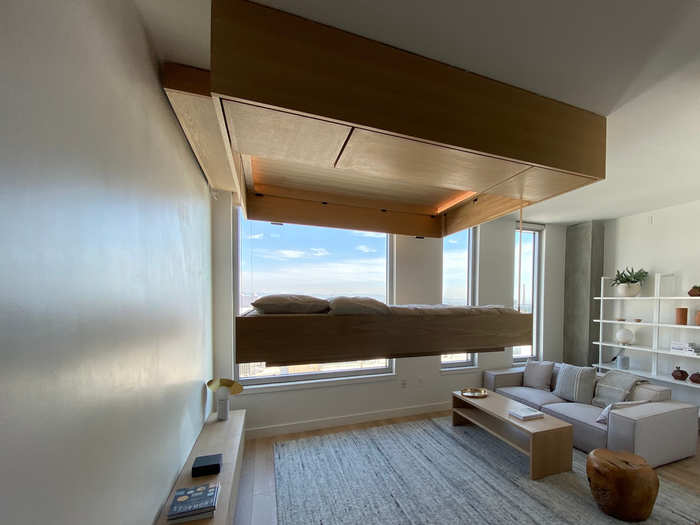
Murthy said the company's concept is a novelty at the moment, meaning it can set the precedent in the market as it becomes more mainstream.
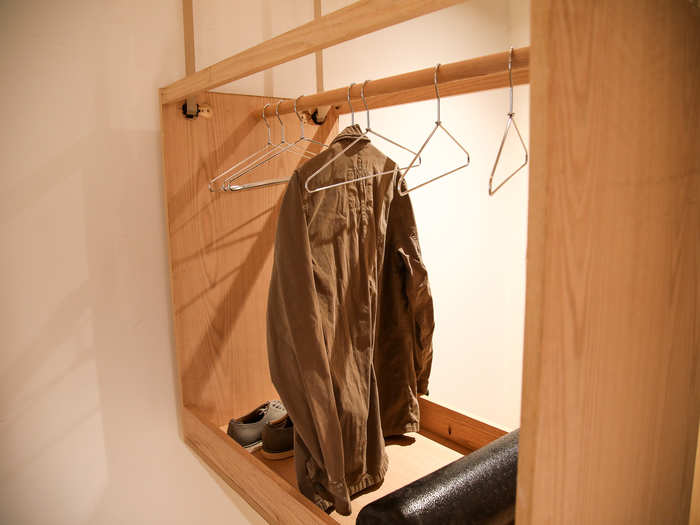
Bumblebee Spaces currently has 24 employees, Murthy said, that came from big names in the tech world. But the company prides itself on its self-described scrappy roots, Murthy said.
"Instead of being an officer in the Navy, let's be a pirate in the ship," Murthy said.

The company has raised "an excess" of $22 million in venture capital, with the last round a Series A led by NTT Ventures. Murthy declined to disclose the startup's valuation.
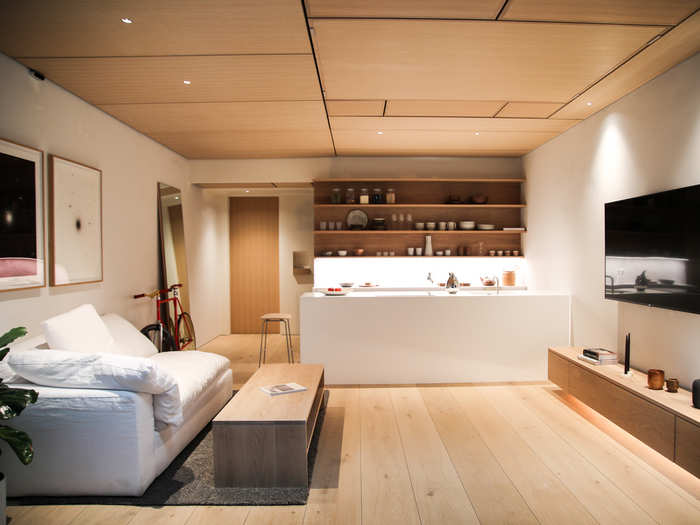
Its last funding round was a Series A in November 2019 that raised $18 million.
Popular Right Now
Advertisement